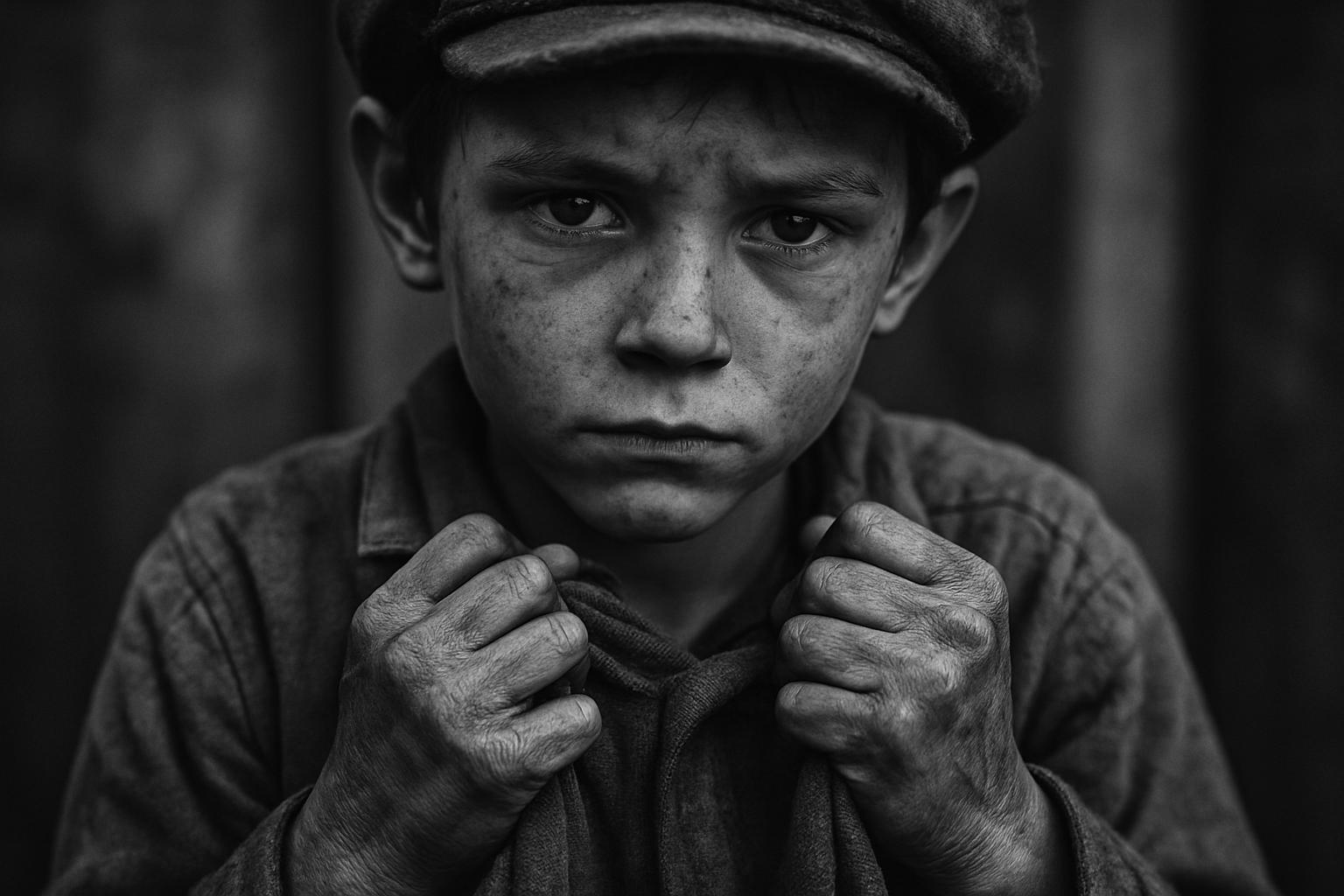For much of his life, the author has been aware of a remarkable family connection to one of Charles Dickens’s most enduring creations, Oliver Twist. This connection stems from the real-life experiences of Robert Blincoe, a foundling born around 1792 in London’s St Pancras district, who endured a harsh upbringing in the workhouses and cotton mills of the Industrial Revolution. Blincoe’s memoir, published in several editions between 1828 and 1833, became a national sensation as it exposed the brutal realities facing child labourers, including starvation, physical abuse, and sexual exploitation. The author’s father had once revealed, during a casual viewing of the musical Oliver!, that Blincoe was their great-great-grandfather—a striking link between family history and literary legend.
Robert Blincoe’s early life was marked by extreme hardship. Abandoned as a child and placed in the care of parish councils, he was apprenticed at seven years old to Nottinghamshire cotton mills, where he laboured without pay until adulthood. His memoir is a collaboratively crafted account incorporating interviews and letters, providing detailed testimony to the cruelty inflicted on many “parish apprentices,” as these children were known. This narrative not only humanised an overlooked class of workers but also played a part in shaping early debates around workers’ rights during a time when the grim realities of the factory system were rarely acknowledged publicly.
The rediscovery and detailed exploration of Blincoe’s life by historian John Waller, in his 2005 biography "The Real Oliver Twist," solidified the view that Blincoe’s story provided a potent factual foundation for Dickens’s novel. Waller traced Blincoe’s journey from the St Pancras workhouse to Manchester, highlighting his role as an icon in the burgeoning labour movement, particularly through his association with trade union leader John Doherty. Doherty was instrumental in republishing Blincoe’s memoir to support the Ten-Hour Movement campaigning to reduce the working day, thereby directly linking Blincoe’s life story to pivotal political movements of the era.
Additional historical context underscores the close relationship between Dickens and the milieu that shaped Blincoe’s experiences. Dickens worked along Fleet Street, near where Blincoe’s memoir was published, and was personally connected to reform circles including Lord Shaftesbury, who organised factory tours to expose working conditions. During a notable factory visit to Manchester in 1838, Dickens was accompanied by Doherty, further entwining the real social reform struggle with the fictional world Dickens created. Critics and scholars have long debated Dickens’s debt to these real-life accounts, with the repeated themes of orphaned children, child labour, and exploitation in Oliver Twist reflecting tangible experiences like those Blincoe endured.
Yet the familial narrative adds layers often omitted from Dickens’s own story. The author’s ancestor Robert’s son became a vicar, illustrating a remarkable social ascent from dire poverty to a respected position, albeit accompanied by bitterness over lost ambitions and familial estrangement. The cleric’s scrapbook and family documents reveal a life lived in the shadow of this legacy, contrasting with the fame of Dickens’s literary persona. The novel Oliver Twist has since expanded into a multimedia phenomenon, spawning countless adaptations and contributing to a collective cultural memory that often eclipses the original, harsh realities that inspired it.
This evolving understanding challenges the traditional image of Dickens as a solitary creative genius, highlighting instead a network of influences, contributions, and lived experiences behind his work. The powerful social critique in Oliver Twist emerged not only from Dickens’s imagination but from the real testimonies and struggles of people like Robert Blincoe, whose life embodied the very injustices Dickens sought to illuminate. The story of Blincoe and his family exemplifies how personal history and literary heritage can intersect, enriching both with meaning and reminding us that behind iconic characters lie true stories of suffering, resilience, and the pursuit of dignity in arduous times.
📌 Reference Map:
- Paragraph 1 – [1], [2], [5]
- Paragraph 2 – [1], [2], [7]
- Paragraph 3 – [1], [3], [4], [6]
- Paragraph 4 – [1], [3], [6]
- Paragraph 5 – [1]
- Paragraph 6 – [1], [3]
Source: Noah Wire Services
